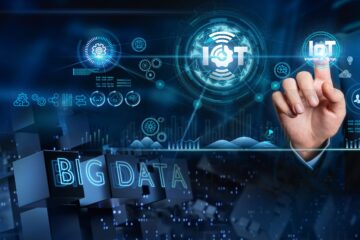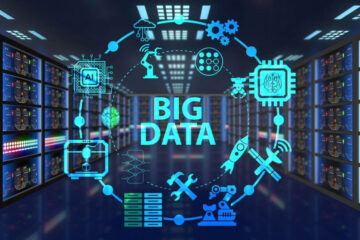In today’s world, data is one of the most valuable assets a business can have. With the proliferation of technology, organizations are generating vast amounts of data every second. Managing and analyzing this information, however, requires sophisticated tools and techniques. This is where big data comes in—data that is too vast and complex to be processed by traditional data systems. In this article, we will explore what big data is, the technologies involved, its impact across industries, and its future potential.
1. What is Big Data?
Big data refers to extremely large datasets that may be analyzed computationally to reveal patterns, trends, and associations. This data can come from a variety of sources: social media interactions, online transactions, IoT devices, business systems, and much more. The three core features of big data are typically referred to as the 3 Vs:
- Volume: The sheer amount of data being generated.
- Velocity: The speed at which data is being created and needs to be processed.
- Variety: The different types of data, including structured, semi-structured, and unstructured data.
Further, as technology evolves, two more characteristics are added to this list: Veracity (the accuracy of data) and Value (the usefulness of the data for decision-making).
2. Big Data Technologies and Tools
Handling and analyzing big data requires specialized tools and technologies. Here are some of the key technologies:
Hadoop
Apache Hadoop is one of the most well-known frameworks for storing and processing large datasets. It allows data to be distributed across many computers, enabling efficient processing of big data.
Spark
Apache Spark is an open-source, distributed computing system used for big data analytics. It processes data much faster than Hadoop by working in-memory (RAM) instead of traditional disk-based storage.
NoSQL Databases
Unlike traditional relational databases, NoSQL databases (such as MongoDB, Cassandra, and Couchbase) are designed to store and manage unstructured and semi-structured data, making them well-suited for big data environments.
Cloud Computing
Cloud platforms like AWS, Google Cloud, and Microsoft Azure offer flexible and scalable solutions to handle big data processing and storage, removing the need for on-premise infrastructure.
Data Warehousing
Solutions like Google BigQuery and Snowflake provide cloud-based data warehousing, enabling businesses to store massive amounts of data in a secure, accessible manner, and retrieve insights more efficiently.
Machine Learning & AI
Artificial intelligence and machine learning algorithms are integral to big data analytics. These technologies allow organizations to derive insights from complex datasets and automate processes based on data analysis.
3. Applications of Big Data Across Industries
Big data is not just a buzzword—it has real-world applications that are revolutionizing industries. Here’s a look at how big data is transforming different sectors:
Big Data in Healthcare
In healthcare, big data allows for more personalized patient care, better diagnosis, and efficient management of healthcare systems. Hospitals and healthcare providers use data from patient records, medical devices, and health monitoring apps to predict health trends and improve patient outcomes.
Examples of Big Data in Healthcare:
- Predictive Analytics: Forecasting disease outbreaks and identifying at-risk populations.
- Personalized Treatment: Using genetic and lifestyle data to tailor individual treatment plans.
- Remote Monitoring: Real-time tracking of patient health metrics using wearables and IoT devices.
Big Data in Finance
The finance sector benefits greatly from big data, with applications in risk management, fraud detection, and personalized financial services. Big data analytics allows for quicker decision-making and deeper insights into customer behaviors.
Examples of Big Data in Finance:
- Fraud Detection: Analyzing transaction patterns to detect fraudulent activities.
- Risk Assessment: Using historical data and machine learning to predict market movements and credit risks.
- Customer Insights: Personalizing financial products and services based on individual spending patterns.
Big Data in Retail
Retailers are leveraging big data to understand consumer behavior, optimize inventory management, and create targeted marketing campaigns. By analyzing purchasing patterns and customer feedback, businesses can improve their operations and customer experiences.
Examples of Big Data in Retail:
- Customer Segmentation: Identifying distinct customer groups and tailoring offerings.
- Inventory Optimization: Predicting product demand and adjusting stock levels in real-time.
- Personalized Marketing: Delivering custom recommendations and promotions based on shopping behavior.
Big Data in Marketing
Big data has transformed how marketers target customers. By analyzing data from social media, websites, and customer interactions, marketers can create more personalized, data-driven campaigns that improve engagement and ROI.
Examples of Big Data in Marketing:
- Customer Journey Mapping: Tracking and analyzing the path customers take before making a purchase.
- Predictive Analytics: Using customer data to forecast future behaviors and improve campaigns.
- Content Personalization: Delivering relevant content to users based on their interests and browsing history.
Big Data in Manufacturing
Manufacturers use big data to improve supply chain management, monitor equipment performance, and enhance the quality of their products. Real-time data helps optimize production processes, reducing costs and improving efficiency.
Examples of Big Data in Manufacturing:
- Predictive Maintenance: Using data from machines to predict when they will need repairs, reducing downtime.
- Supply Chain Optimization: Analyzing data from suppliers and production lines to improve logistics.
- Quality Control: Using real-time data to monitor production quality and reduce defects.
Big Data in Education
Education institutions use big data to personalize learning experiences, track student progress, and improve teaching strategies. By analyzing student performance and engagement data, educators can identify areas of improvement and optimize the learning process.
Examples of Big Data in Education:
- Adaptive Learning: Tailoring lessons based on individual student performance.
- Student Retention: Analyzing dropout rates and engagement to predict and improve student retention.
- Curriculum Optimization: Using data to evaluate and improve the effectiveness of teaching materials and methods.
4. Challenges of Big Data
While the benefits of big data are clear, there are several challenges that businesses and organizations face:
Data Privacy and Security
As more data is collected, ensuring the privacy and security of this information becomes crucial. Organizations need to protect data from breaches and ensure compliance with regulations like GDPR and CCPA.
Data Quality
Having large quantities of data is not enough; the quality of that data is just as important. Inaccurate, incomplete, or biased data can lead to flawed insights and decisions.
Data Integration
Data often comes from multiple sources and in different formats, making it difficult to integrate and analyze cohesively. Data integration tools and platforms are essential to make sense of disparate data.
Skilled Workforce
There is a high demand for skilled data scientists, analysts, and engineers who can work with big data technologies. Finding and retaining qualified professionals is a key challenge.
5. The Future of Big Data
The future of big data is incredibly promising. As technology advances, data processing will become faster and more sophisticated. Some of the trends that will shape the future of big data include:
Real-Time Analytics
As businesses demand faster decision-making, real-time analytics will become the norm. Real-time data processing will enable organizations to make immediate, data-driven decisions, particularly in areas like customer service, inventory management, and fraud detection.
Artificial Intelligence and Machine Learning
AI and machine learning will play an even greater role in big data, automating data analysis and uncovering insights that humans may miss. These technologies will enable businesses to make smarter predictions and take action faster.
Cloud and Edge Computing
With the rise of cloud services and edge computing, organizations will be able to store and analyze data more efficiently. Cloud platforms will continue to provide scalable storage and computing power, while edge computing will allow for faster data processing closer to where it is generated.
Data Democratization
As big data technologies become more accessible, organizations of all sizes will be able to harness the power of data. User-friendly tools will empower non-technical users to analyze and interpret data, leading to more widespread adoption.
Conclusion
Big data is revolutionizing industries across the globe, unlocking new opportunities for businesses and organizations to thrive. By leveraging data analytics, machine learning, and advanced cloud computing technologies, businesses can gain actionable insights that lead to better decision-making and enhanced performance. As technology continues to evolve, the possibilities of big data will expand, creating smarter, more efficient systems across every sector. Embracing big data today will allow organizations to stay competitive and drive innovation in the future.



0 Comments